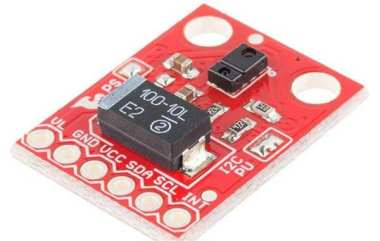
Active infrared sensors, as a crucial sensor type in the electronics industry, are gaining significant attention as technology continues to advance. In this article, we will delve into the applications, working principles, characteristics, and advantages of active infrared sensors in the electronics industry.
Catalog
I. What are Active Infrared Sensors?
III. Characteristics and Advantages
I. What are Active Infrared Sensors?
Active infrared sensors are sophisticated electronic components capable of emitting and receiving infrared light. By detecting the reflection or obstruction of infrared light, these sensors can detect the presence of objects without the need for direct contact. This technology enables the detection and identification of objects based on the properties of infrared light.
Active infrared sensors typically consist of emitters, receivers, and signal processing circuits. The emitter generates infrared light beams and projects them into the surrounding environment, while the receiver detects and analyzes the reflected or obstructed light signals. The signal processing circuit converts the received signals into digital signals and analyzes them based on predefined algorithms to detect and identify target objects.
II. Working Principle
Active infrared sensors operate using radar technology, emitting and receiving infrared radiation. When the radiation interacts with nearby objects, it bounces back to the sensor's receiver, enabling the detection of movement and measurement of the distance between objects and the sensor. This technology is particularly useful in robotics for proximity detection.
III. Characteristics and Advantages
· High Sensitivity: Active infrared sensors utilize advanced optical technology and sensitive receivers, allowing them to quickly and accurately detect subtle changes in light signals, resulting in high sensitivity for object detection.
· Low Power Consumption: Thanks to their advanced electronic components and energy-efficient design, active infrared sensors consume relatively low energy during operation, enabling long-term stable operation without excessive power consumption.
· Strong Reliability: With a simple and stable structure, active infrared sensors are less susceptible to external interference, resulting in high reliability and stability, allowing them to function normally in various environmental conditions.
· High Adaptability: Active infrared sensors are designed to adapt to various environmental factors, exhibiting strong adaptability regardless of indoor or outdoor settings, varying light conditions, or temperature fluctuations.
IV. Applications
· Security Systems: Widely used in security systems for intrusion detection, perimeter protection, indoor monitoring, ensuring the safety of people and property.
· Automation Systems: Commonly utilized in industrial automation for controlling and monitoring material flow, machine operation status, enhancing production efficiency, and safety.
· Traffic Systems: Employed in traffic management systems for detecting the presence of vehicles and pedestrians, enabling intelligent traffic signal control and smart parking systems.
· Healthcare: In medical devices, active infrared sensors can monitor patients' body temperature, heart rate, and other physiological indicators, facilitating remote monitoring and diagnosis.
V. Conclusion
Active infrared sensors play a crucial role in the electronics industry, particularly in safety, automation, and other fields. Their simple and reliable working principles, high sensitivity, low power consumption, and adaptability make them widely sought after and applied. With ongoing technological advancements, active infrared sensors will continue to play a vital role, providing smarter and more convenient solutions for various application scenarios.




